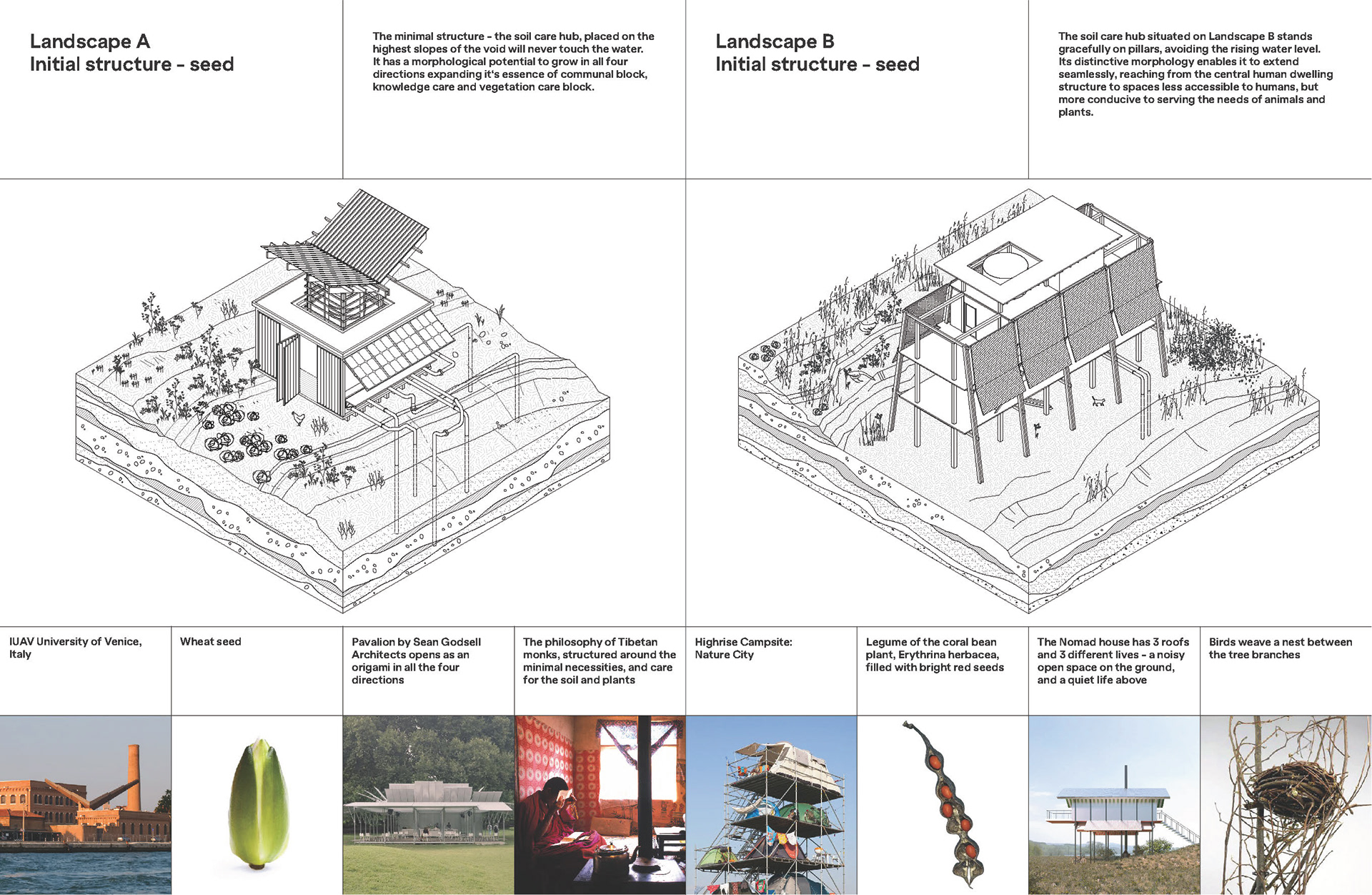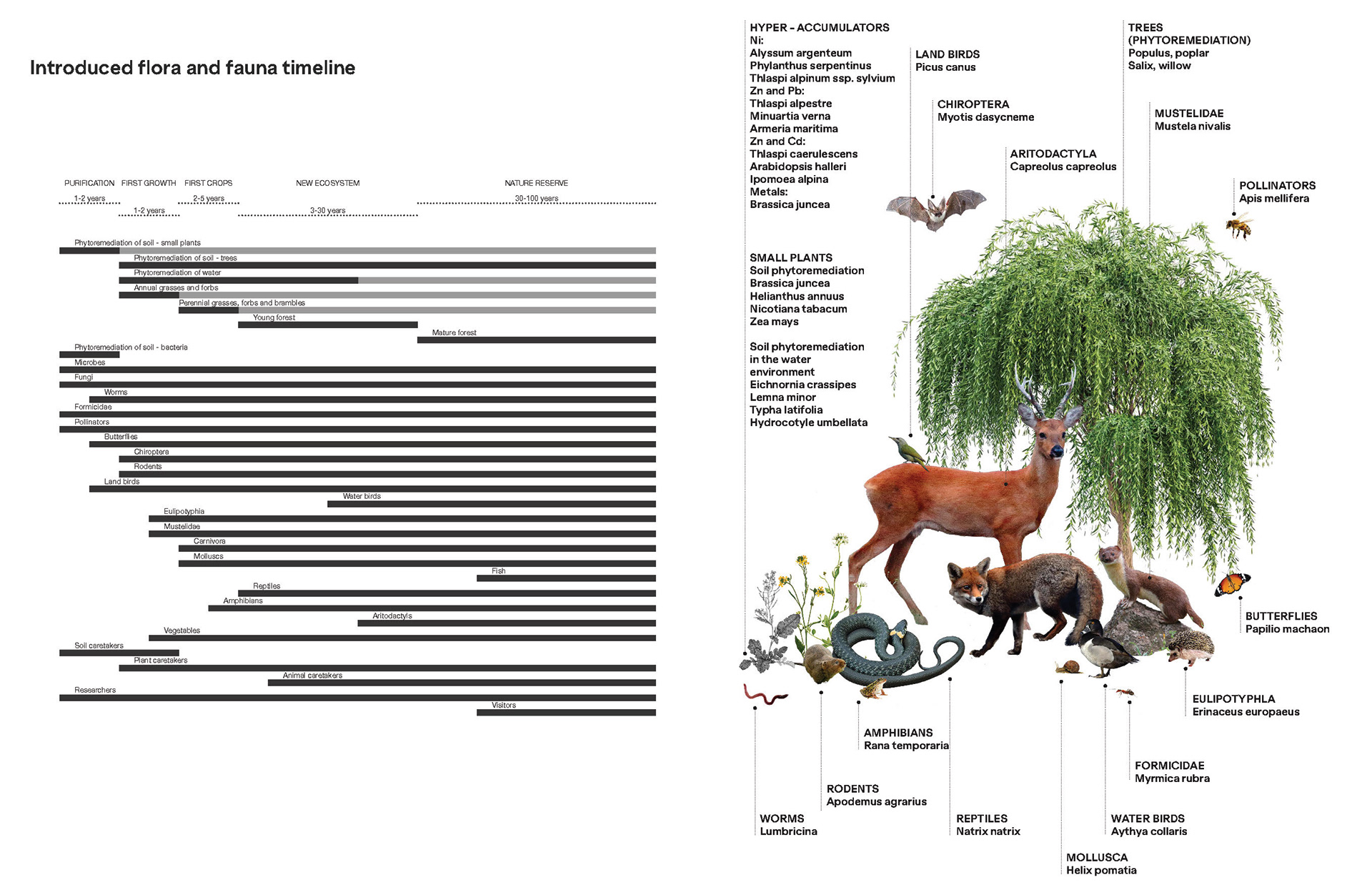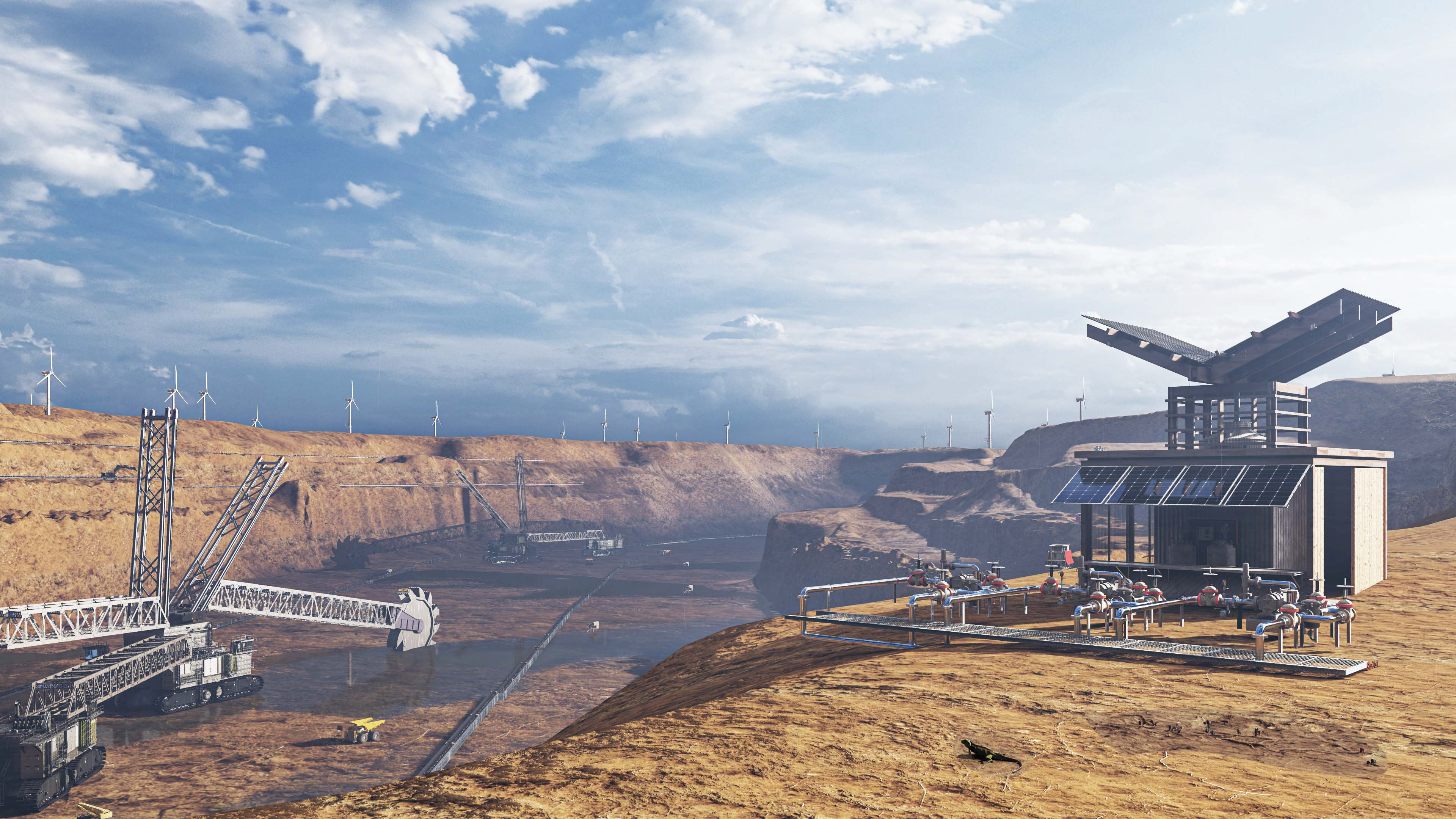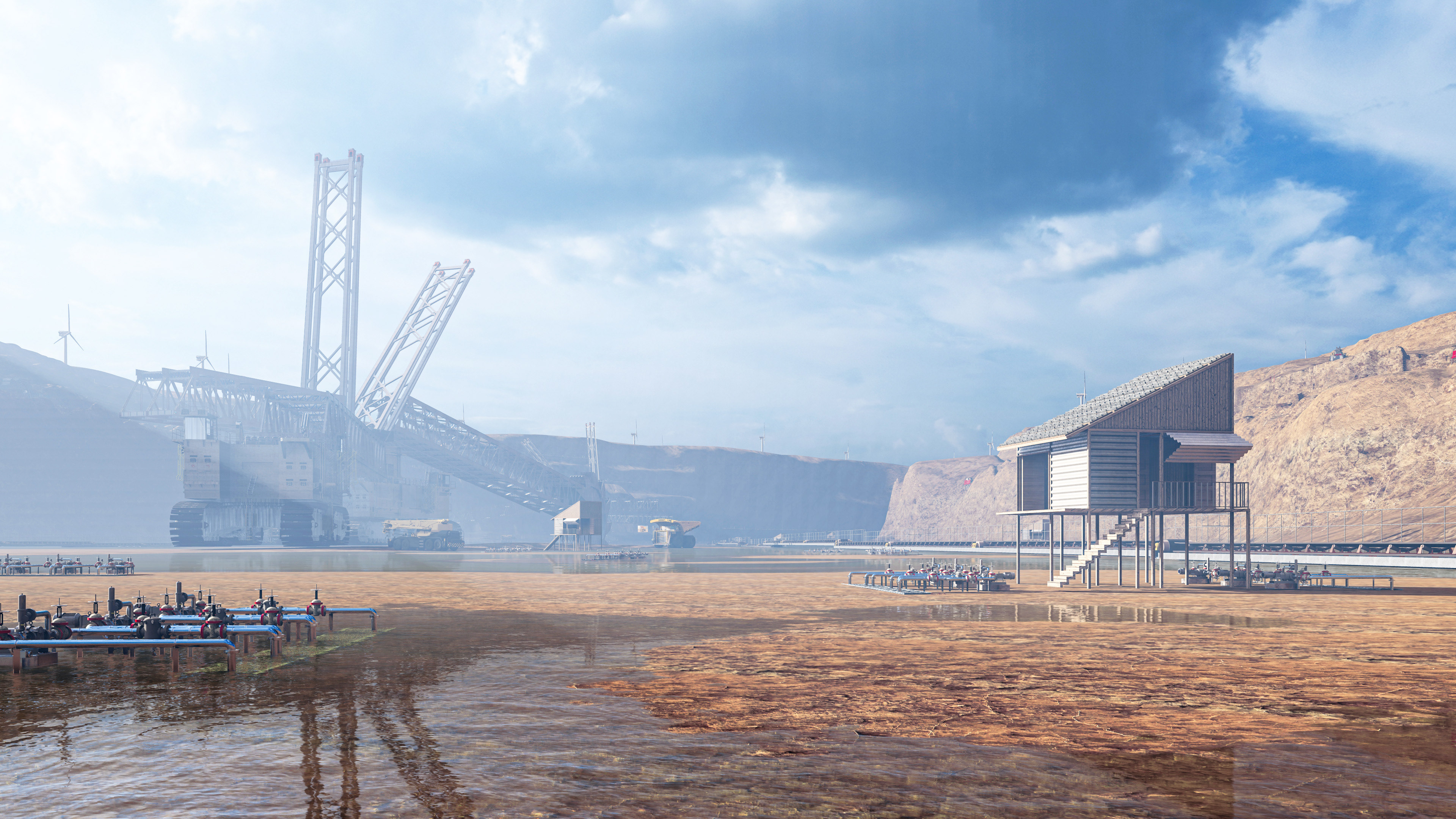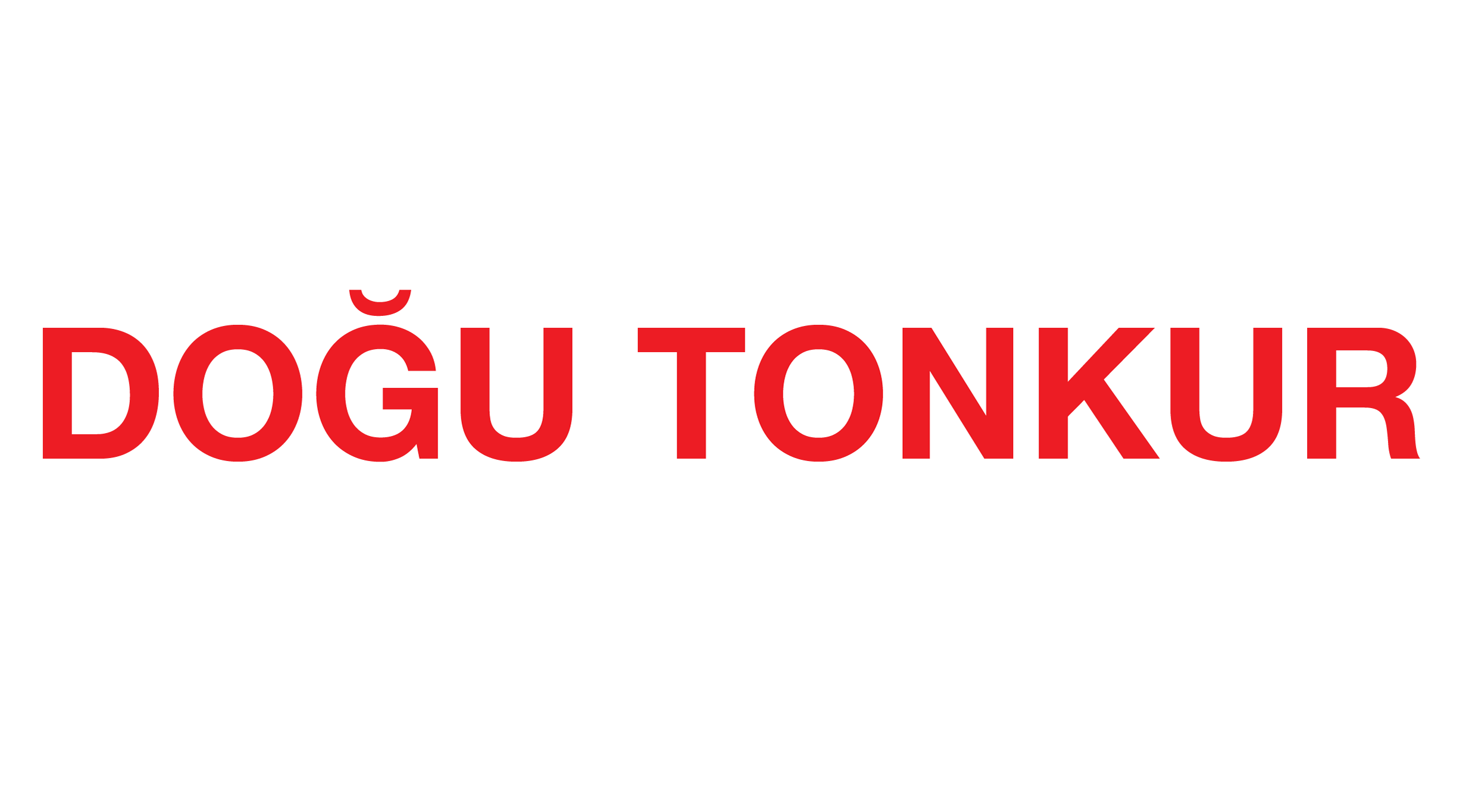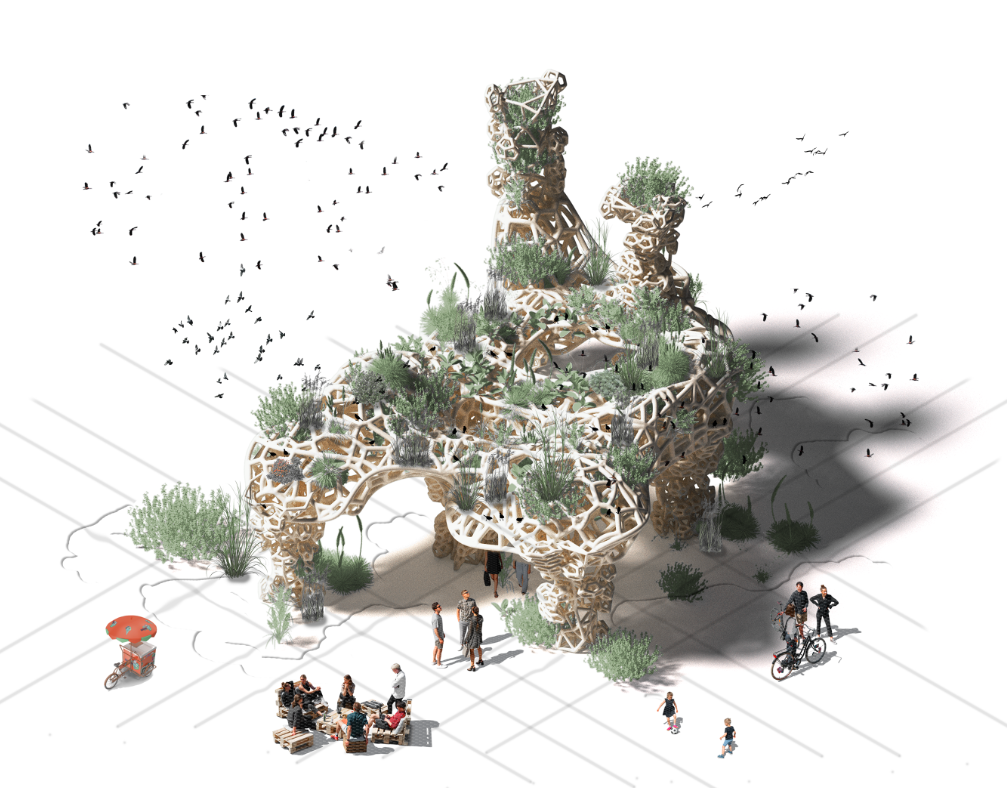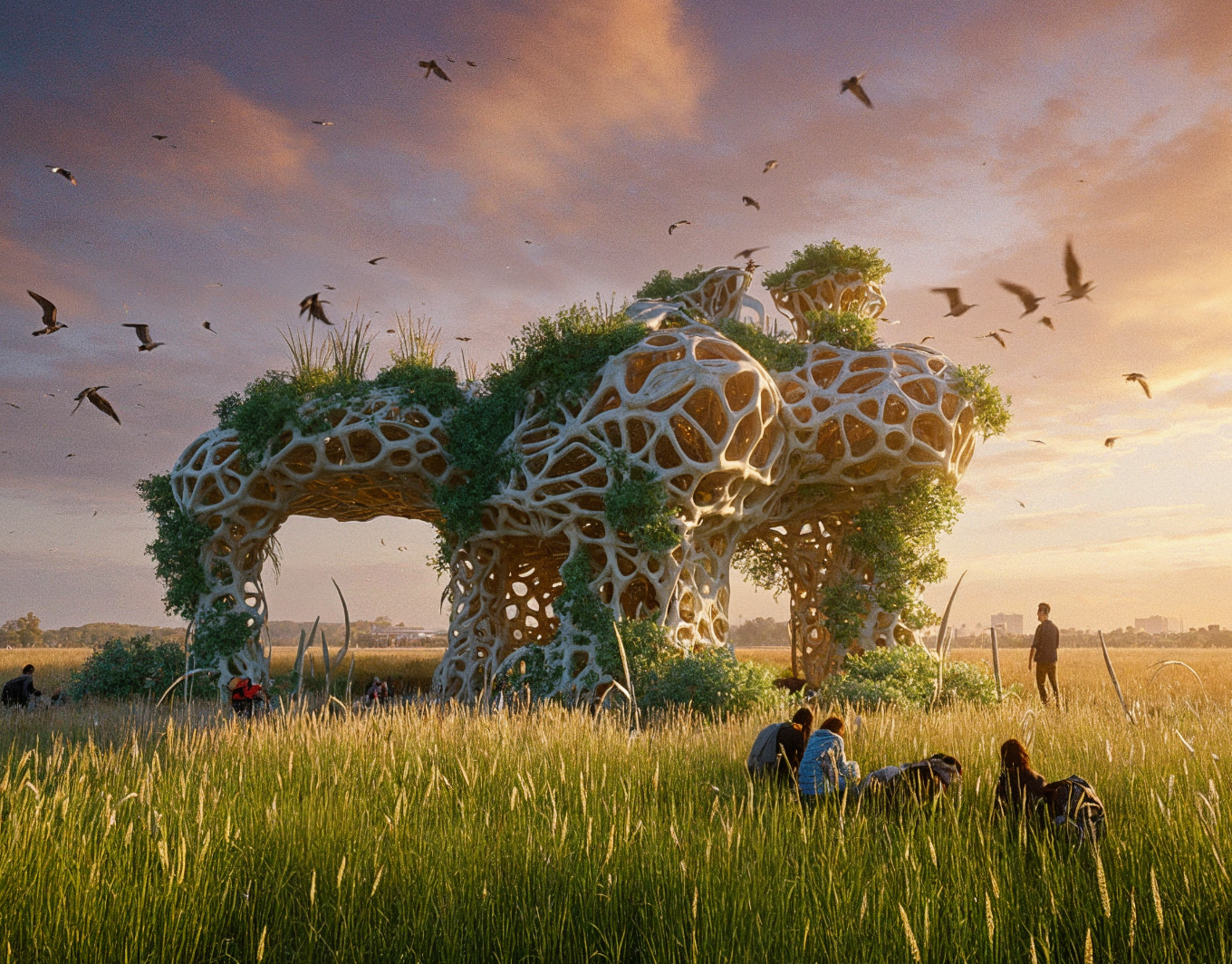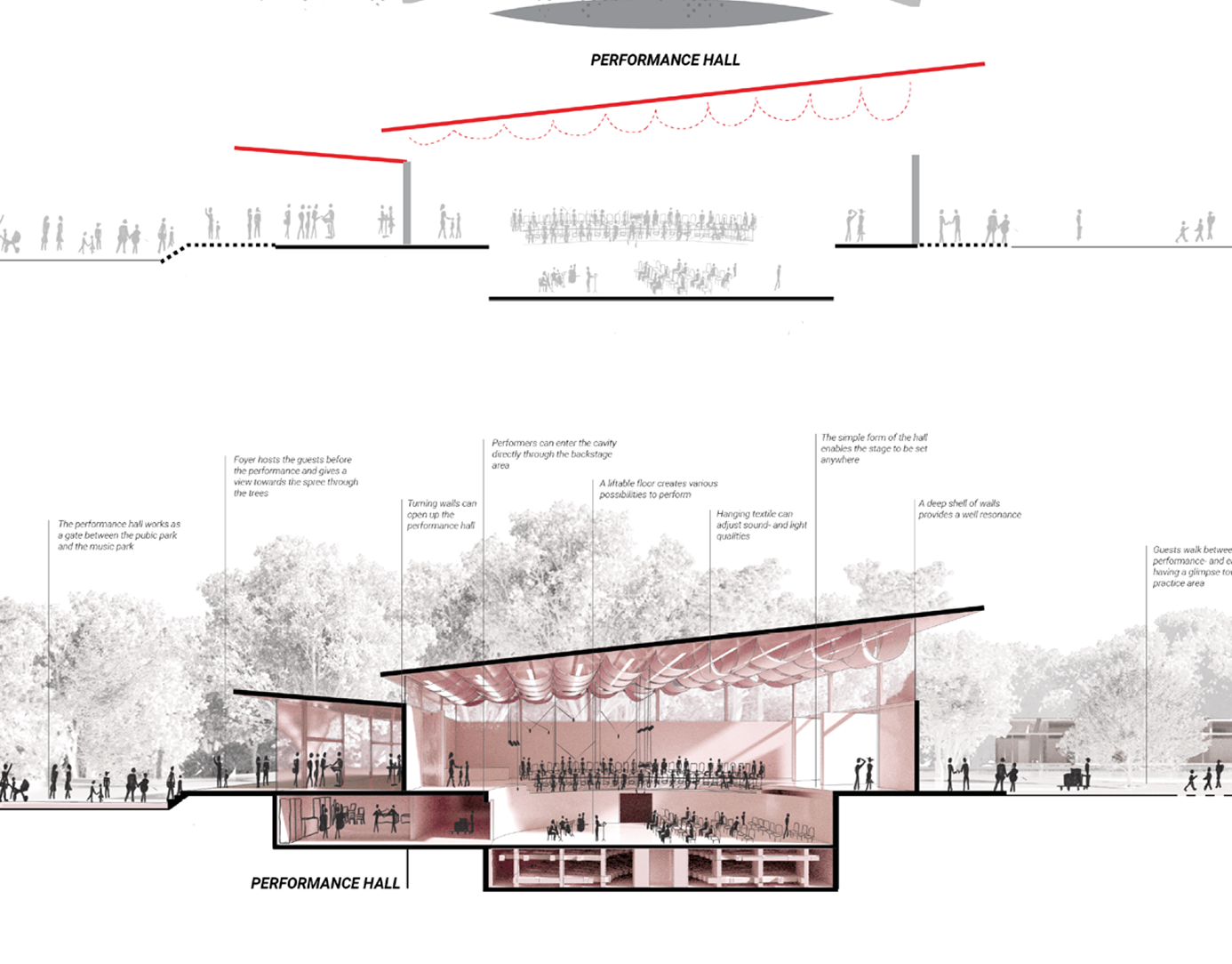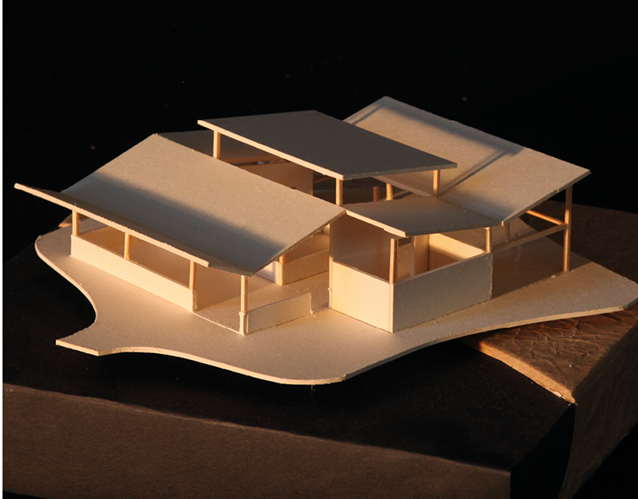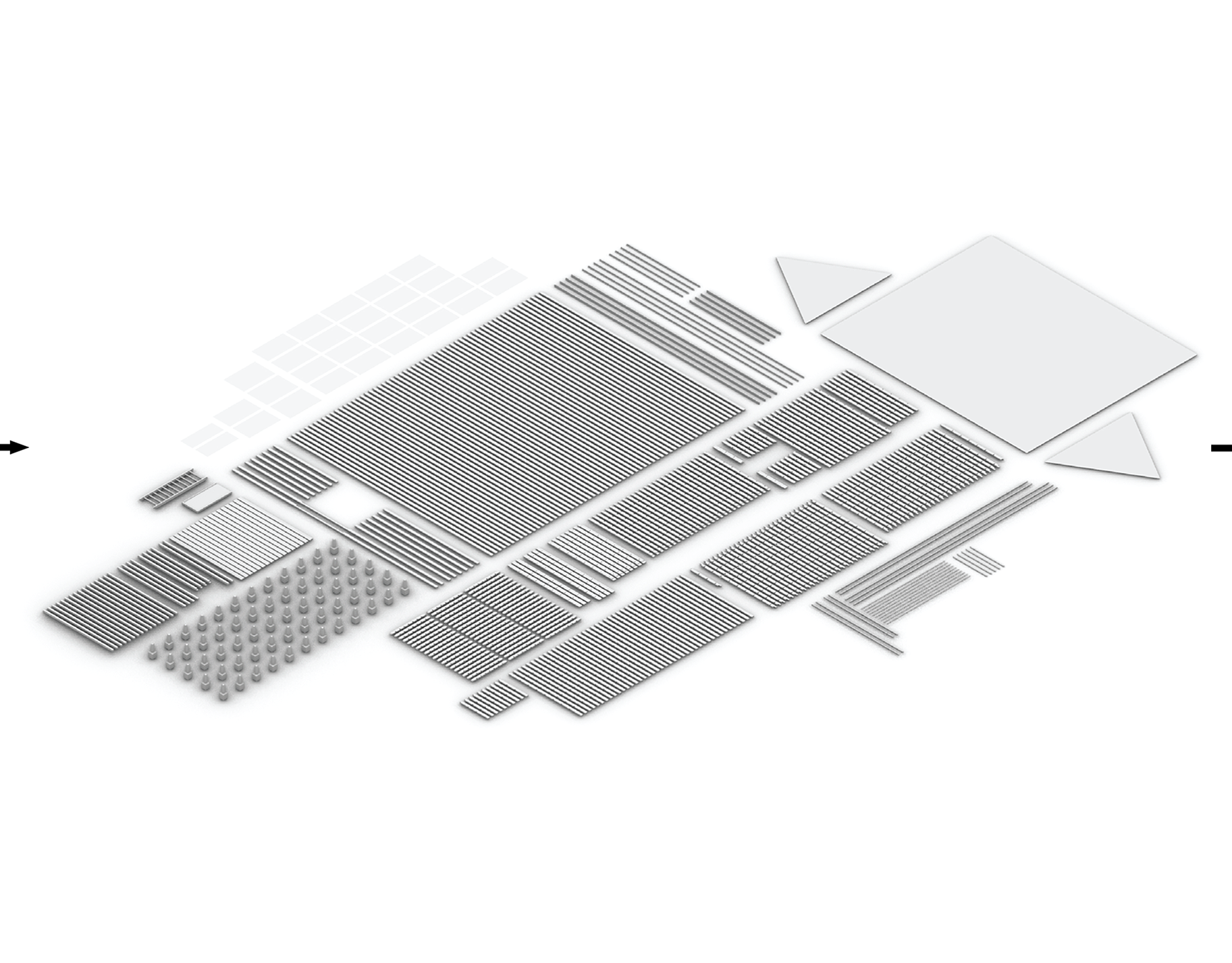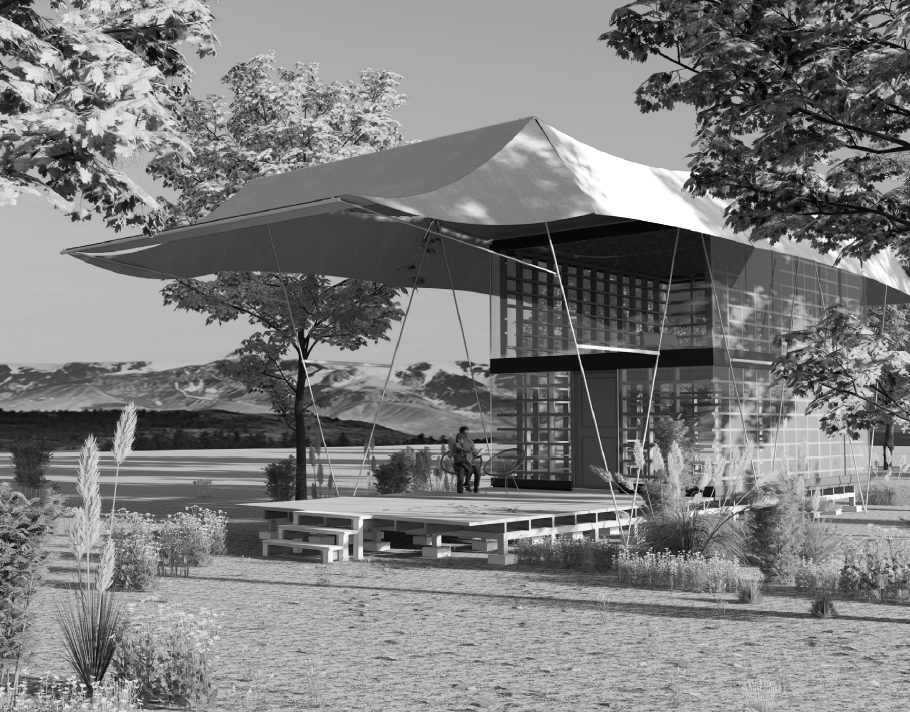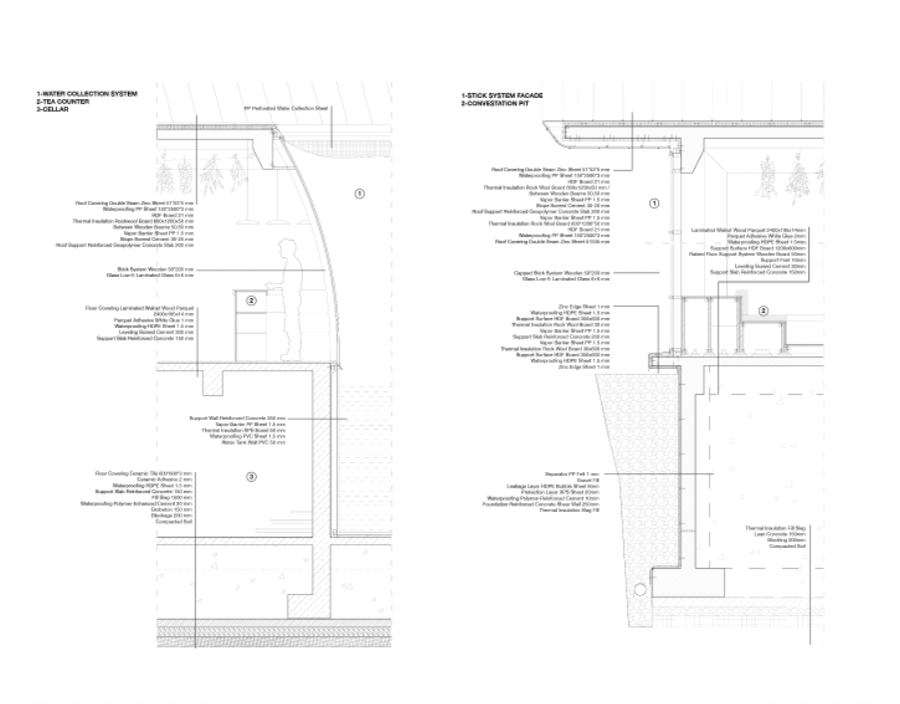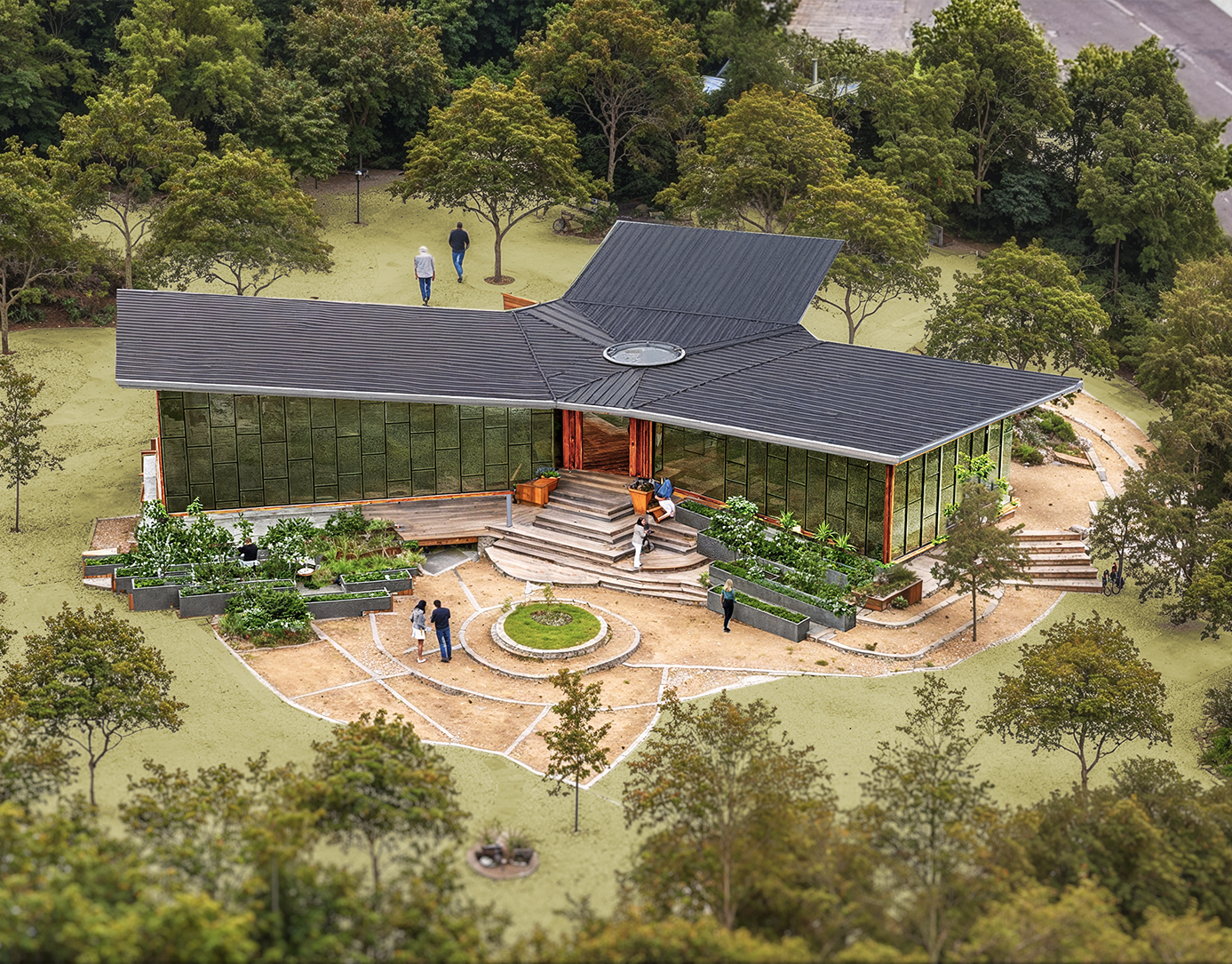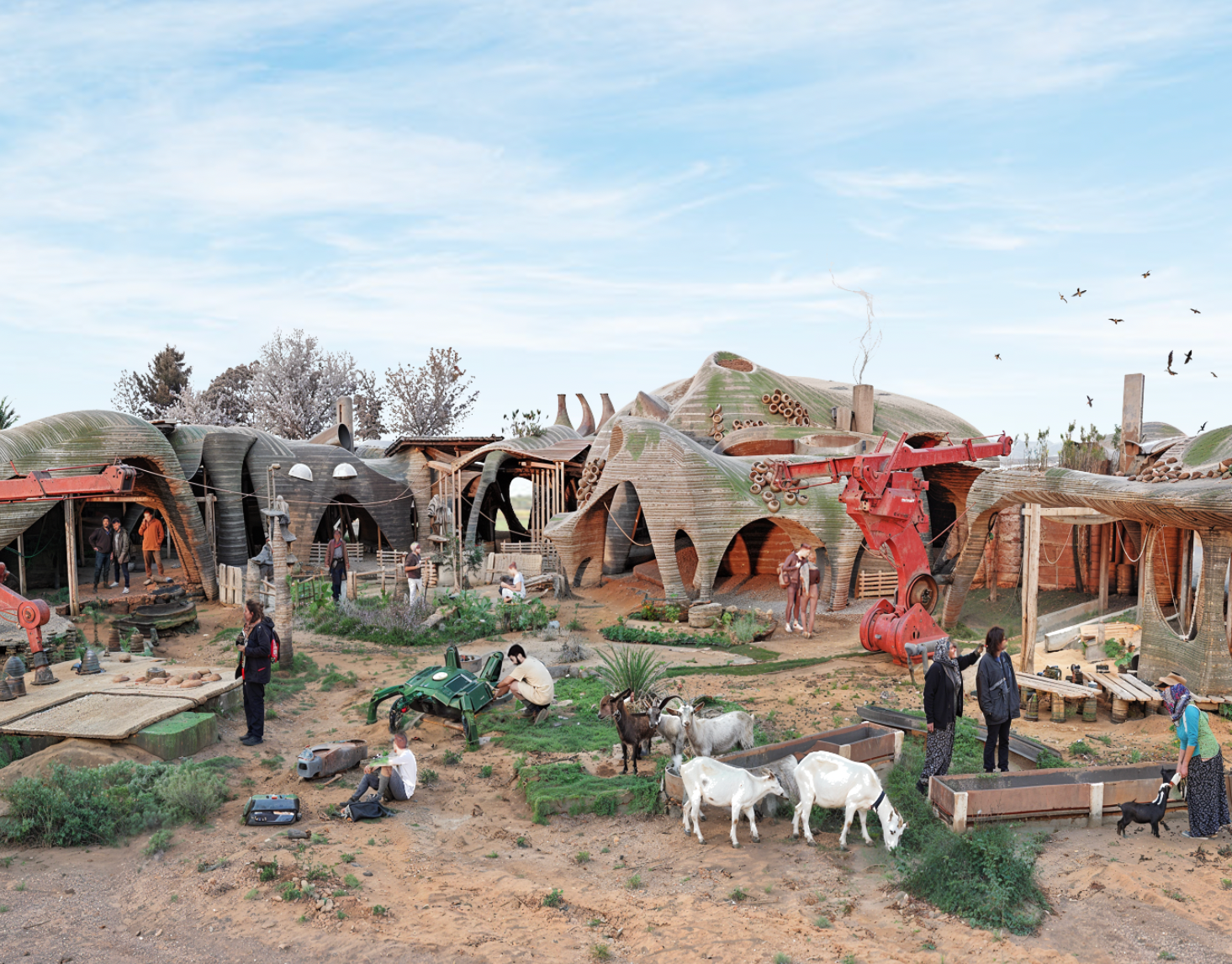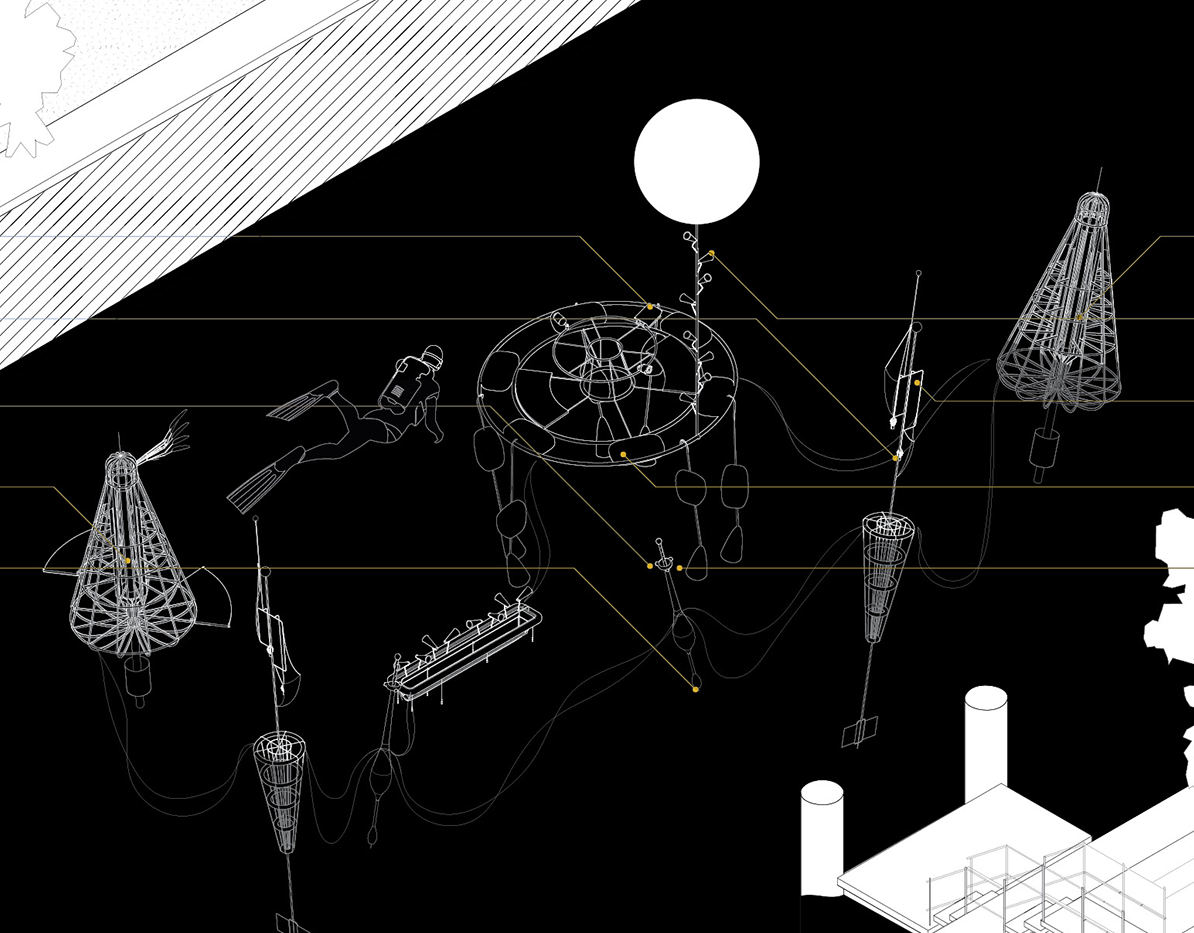
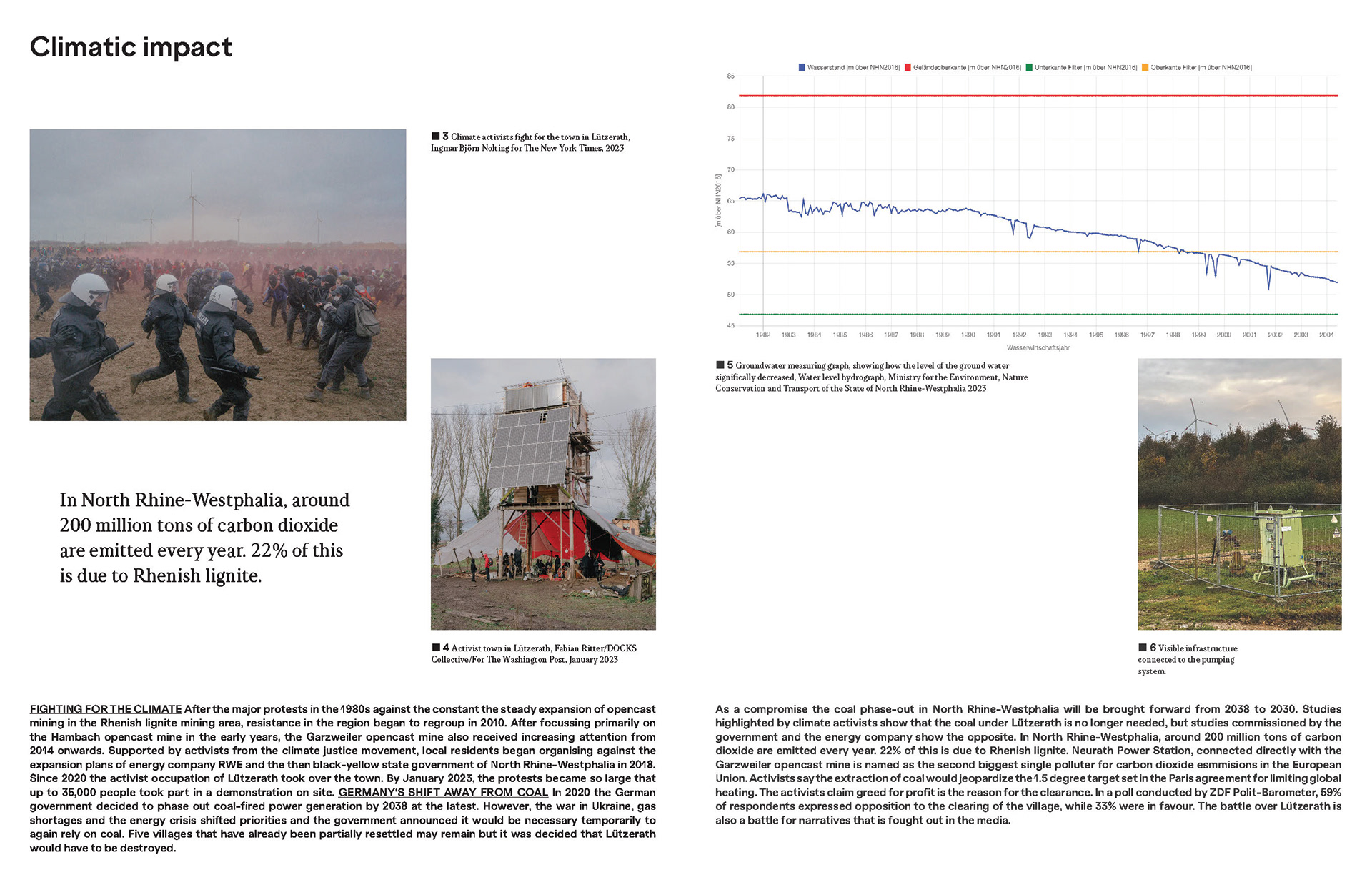
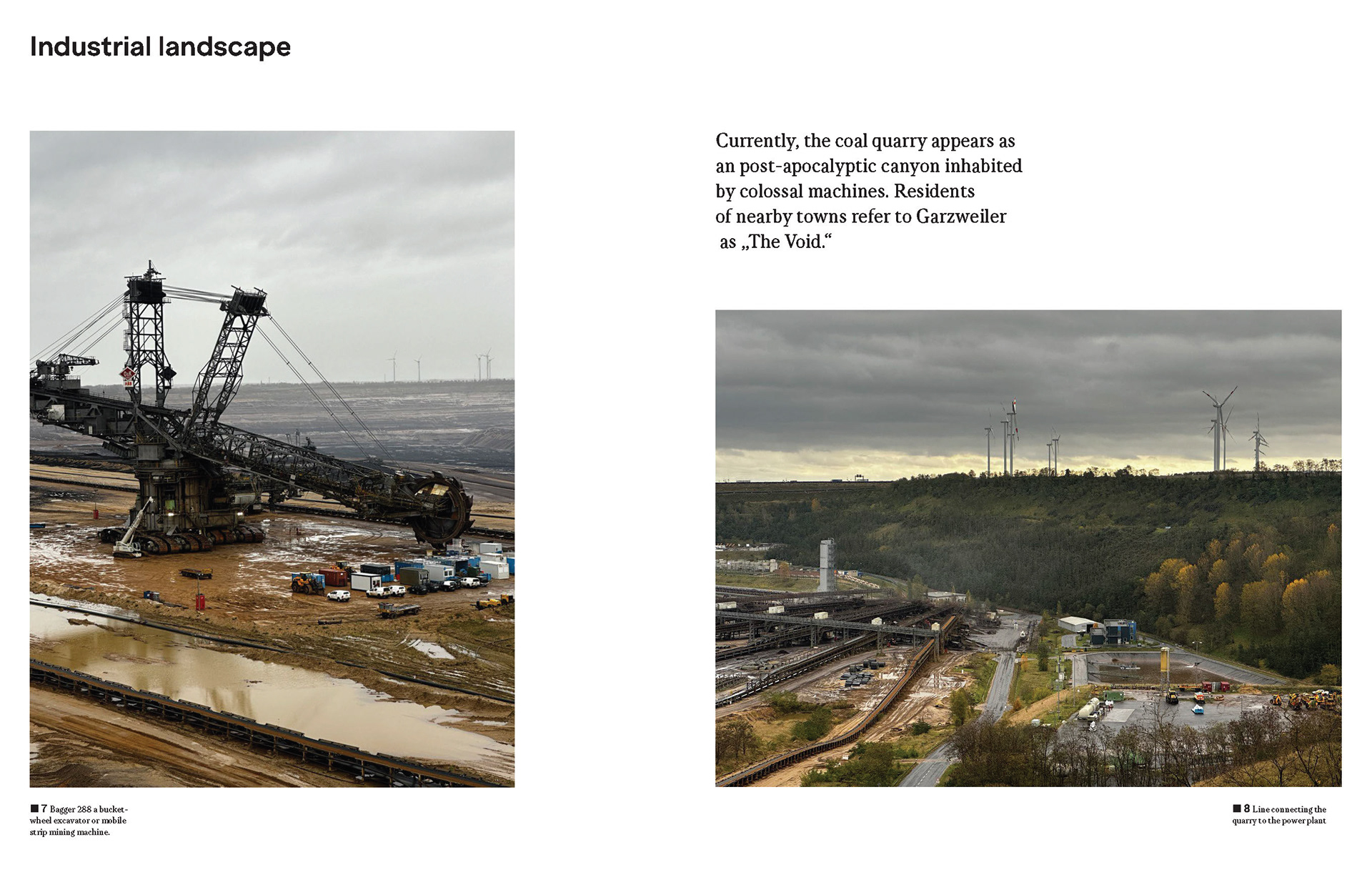

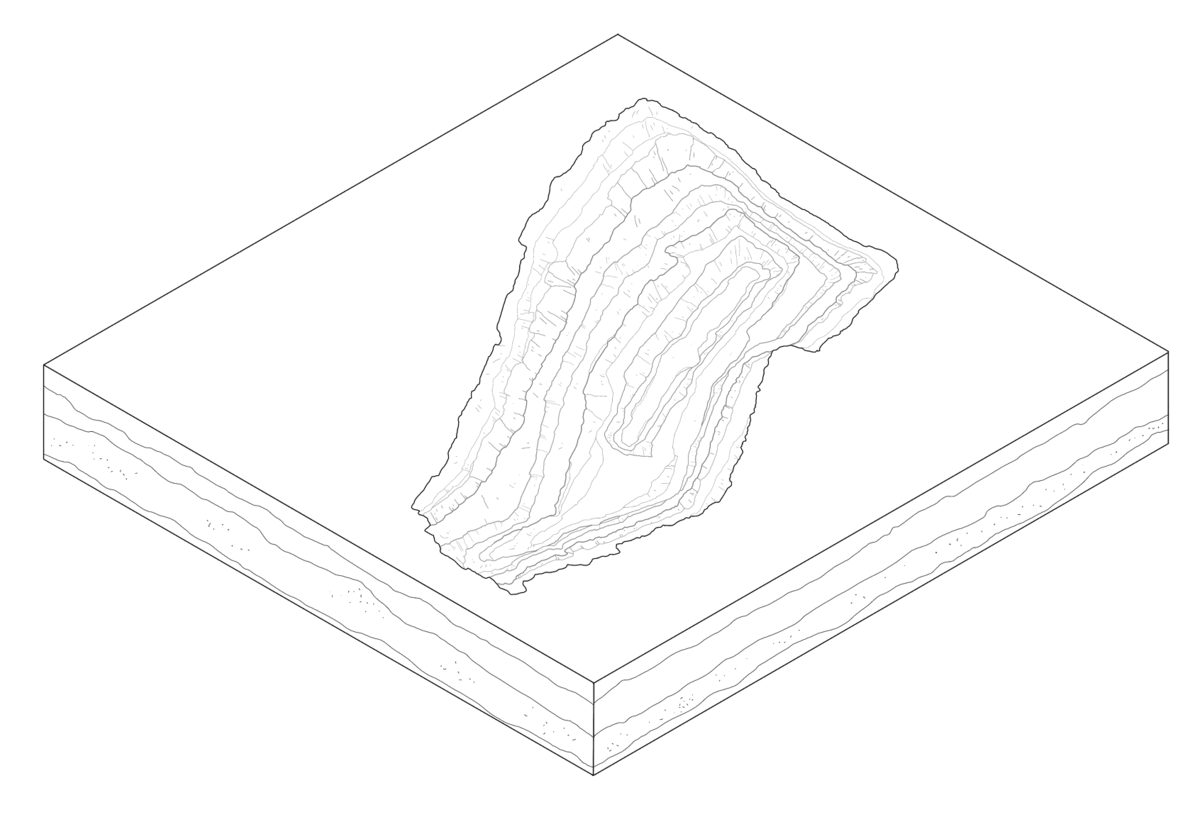
Garzweiler II, a surface coal mine in North Rhine-Westphalia, Germany, is set to cease operations by 2030 in accordance with the German course towards sustainable energetics. Funded by RWE, the 32 km2 area, reaching a depth of 180m, will establish a new eco-system, creating “The Common Void”.
Mining constantly affects groundwater soil quality, and neighboring ecosystems, requiring regeneration. Once operations stop, groundwater levels will slowly rise, forming a lake over the next 50 years. However, a phytoremediation process is crucial for addressing the contaminated water and soil. This project states an adaptive typological approach to regeneration, differing from conventional methods. “The Common Void” aims to become a prototype for a new cooperative eco-system system with its unique regenerative approach.
Legal status transitions from industrial to a nature reserve. Regeneration involves a multispecies approach, guided by sustainability and biological factors.
Four landscape types adopt a temporal approach. A primary structure, metaphorically named seed, initiates the process. Four variations of seeds, with the same initial qualities, differ architectonically based on the future landscape properties. Initial seeds focus on soil care, potentially transforming into diverse facilities. Caretakers and Researchers operate the program, treating all creatures equally.
In the modern world, against the backdrop of an energy crisis and military conflicts, it becomes evident that living in a constant conflict between humans and nature, fighting for limited resources while causing destruction, can not be accepted anymore. Garzweiler serves as an extreme example of such a conflict, where relationships between all the actors - locals, activists, government and the energy company appear practically impossible.
The project aiming to establish a new model of culture-nature relationships, follows the next principles: In a narrative where there is no win or dominion within, there are no antagonist species, yet there is a collaborative understanding within the species. A co-existence will be sought for a common ground. In this project soil, water, flora, and fauna are no longer considered as resources but as actors.
The Void will serve as a large web of care, reshaping future narratives. Throughout the regeneration, the local knowledge of the Void will not only be produced but also shared with the visitor. Caretakers operate, researchers enhance and visitors learn. The future is not bound to the predominant “human development” thinking. The human-centric ideology is abandoned and an inter-species understanding is being built.
The void will reject the human-nature dichotomy. The Void will be a pioneer for a new co-living model for the outer world. The fact that it is being regenerated from a damaged landscape of anthropocene, will carry the hope of a fruitful future.
